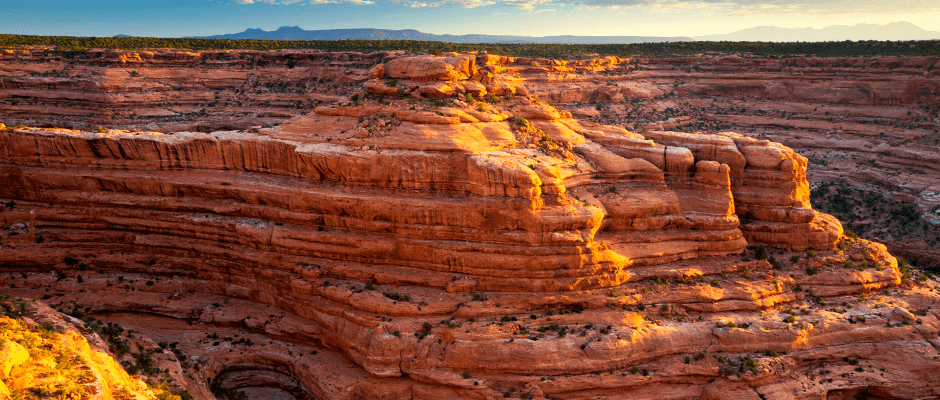Share this article
Final report on national monuments review officially released
On Dec. 5, Ryan Zinke, the U.S. Secretary of the Interior, officially released the final report detailing his department’s review of certain national monuments under the Antiquities Act. The memorandum to the President was initially leaked to the press in September; the report’s official release came the day after President Trump accepted two of the recommendations — reducing the size of Bears Ears National Monument and Grand Staircase-Escalante National Monument both in Utah. The final report also recommends reducing Cascade-Siskiyou National Monument in Oregon and California and Gold Butte National Monument in Nevada. Secretary Zinke also recommended establishing three new national monuments — the Badger II Medicine Area in Montana, Camp Nelson in Kentucky, and the Medgar Evers Home in Mississippi.
The report also recommends management changes to ten monuments, naming inadequate coordination with the sportsmen community during the designation of the monuments as cause for the changes. The report frequently recommends that monument management plans should be “revised to protect objects as well as prioritize public access; infrastructure upgrades, repair, and maintenance; traditional use; tribal cultural use; and hunting and fishing rights.” In the report, Sec. Zinke recommends the ongoing review of monuments so that these priorities can be further emphasized.
In the report Zinke also disparages the recent interpretations of an “object of historic or scientific interest,” which are some of the reasons a President can establish a national monument under the Antiquities Act. Sec. Zinke claims recent monument designations have broadened the use of this phrase to include landscape areas, biodiversity, ecosystems, and viewsheds. He says that “when landscape areas are designated and reserved as part of a monument, objects and large tracts of land are overlain by a more restrictive management regime, which mandates protection of the objects identified. This has the effect of narrowing the range of uses and limiting BLM’s multiple-use mission.”
Grand Staircase-Escalante National Monument, one of the monuments recently shrunk by President Trump, fits into this characterization by Zinke. Established in 1996 by President Clinton, it is occasionally referred to as the “scientific monument” for its immense ecological diversity and its role as a scientific laboratory for research relating to rangeland management, ecological changes, and historic climates.
President Trump’s decision to reduce the size of Bears Ears National Monument and Grand Staircase-Escalante National Monument is already facing lawsuits. The Native American tribes that initially lobbied to create Bears Ears were the first to file a lawsuit, shortly followed additional suits from environmental groups, paleontology groups, and the outdoor retailer Patagonia. The lawsuits generally argue that only Congress has the authority to diminish or dissolve national monuments and that the Antiquities Act gives Presidents the authority to create national monuments, but not abolish them in whole or in part.
Lawmakers from Utah are working to make the lawsuits moot by attempting to codify the reductions and establish new management. Representative Chris Stewart’s bill (H.R. 4558) would create a sixth national park, known as the Escalante Canyons Park and Reserve, using the reduced size of Grand Staircase-Escalante as the foundation of the park. Representative John Curtis’ legislation (H.R. 4532) would establish two national monuments, Shash Jaa and Indian Creek, from what was Bears Ears and would ensure tribal co-management of the site.
Header Image: ©Bob Wick/ BLM








